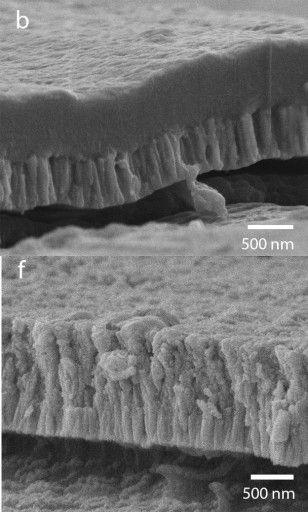Bioactive Coating Could Soon Improve Polymer Spinal Implants

The success rate of spinal implants made with high-performance polymers called PEEK could become even better thanks to a bioactive coating that until now couldn't be applied to the material. Researchers from North Carolina State University have for the first time succeeded to coat the polymer implants with a calcium phosphate that bonds well with bone, which required a special technique to protect the polymer, a form of plastic, from the high temperature needed to crystallize the coating material.
PEEK, which stands for polyether ether ketone, is an advanced biomaterial used in medical implants called PEEK, but it does not bond well with bone or other tissues in the body. This can lead to the implant rubbing against surrounding tissues, which can result in medical complications and the need for additional surgeries.
“We wanted to apply a bioactive coating that would allow the polymer implants to bond with surrounding tissues,” says Dr. Afsaneh Rabiei, an associate professor of mechanical and aerospace engineering at NC State and lead author of a paper on the research.
The top scanning electron microscope image (b) shows a cross section of the bioactive hydroxyapatite/YSZ coating without heat treatment. Note how the two layers are distinct. The bottom image (f) shows the coating after heat treatment. Note how the layers are now integrated.
“The challenge was that these coatings need to be heated to 500 degrees Celsius, but the polymer melts at 300 C. We’ve finally solved the problem.”
Key to the technique is to first coat the implant with a thin film of yttria-stabilized zirconia (YSZ), which acts as a heat shield, and thus prevents the organic polymer thermoplastic PEEK from melting.
Then a coating of hydroxyapatite, a calcium phosphate that bonds well with bone, is applied using radio-frequency magnetron sputtering. This layer is then heated by microwaves, which gives the hydroxyapatite a crystalline structure that makes it dissolve more slowly — promoting bonding with surrounding bone.
“We have received funding from the National Institutes of Health to proceed with animal testing to fine-tune this technique,” Rabiei says. “Then we will move on to clinical testing.” Initial cell culture tests with the coated material already proved successful.
One of the potentially benefiting spinal implant devices (K7C Cervical Spacer), made with the new highest-performance PEEK variant called Vestakeep which was developed by German high-tech manufacturer Evonik Industries, has just received the US FDA's 510(k) clearance last week.
Another advantage of PEEK is that medical implants can be manufactured to the exact individual form required for each patient with advanced additive manufacturing tools, also known as 3D printers.
Study:
Afsaneh Rabiei and Stefan Sandukas, Processing and Evaluation of bioactive coatings on polymeric implants, Journal of Biomedical Materials Research: Part A, 2013, DOI: 10.1002/jbm.a.34557
Published by Medicaldaily.com



























